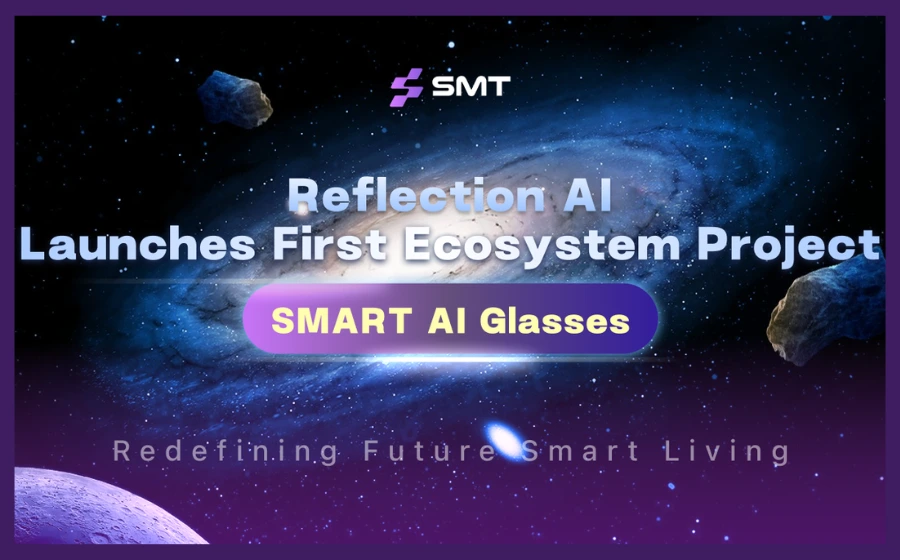
KEYTAKEAWAYS
- Ethereum aims to optimize its Layer 1 foundation, balancing minimalism and functionality to support Layer 2 solutions while maintaining critical base layer capabilities.
- Improving solo staking accessibility by lowering entry thresholds and simplifying node operation is crucial for enhancing Ethereum's decentralization and security.
- Ethereum is preparing for future challenges through quantum resistance strategies, protocol simplification, and implementing automated responses to potential network attacks.

- KEY TAKEAWAYS
- STRENGTHENING THE BASE LAYER (L1)
- ROBUSTNESS AND DECENTRALIZATION
- ADDRESSING THE CHALLENGES IN ETHEREUM L1
- MITIGATING THE RISKS OF PROOF OF STAKE
- RECOVERY FROM 51% ATTACKS
- PROPOSAL FOR INCREASED QUORUM THRESHOLD
- QUANTUM RESISTANCE STRATEGY
- SIMPLIFYING THE PROTOCOL
- SUMMARY
- DISCLAIMER
- WRITER’S INTRO
CONTENT
Explore Vitalik Buterin’s ETHCC7 keynote outlining Ethereum’s future, including L1 optimization, decentralization efforts, staking improvements, and security enhancements for a robust blockchain ecosystem.
In a momentous gathering at ETHCC7 in Brussels, Ethereum‘s founder Vitalik Buterin took the stage to deliver a keynote speech outlining the future trajectory of Ethereum. This event was particularly significant as it coincided with the 10th anniversary of Ethereum‘s ICO. Buterin’s presentation was not only a reflection on Ethereum’s journey so far but also a detailed roadmap of its future.
STRENGTHENING THE BASE LAYER (L1)
Vitalik began by discussing the critical importance of optimizing Ethereum to be a highly reliable, trustworthy, and permissionless Layer 1 (L1) foundation. This optimization is essential to support the Layer 2 (L2) solutions that build on top of Ethereum.
Key Points:
- Spectrum of Ethereum’s Future Roles:
-
- Minimalist Base Layer: At one end, Ethereum could serve purely as a proof verifier for all L2s and enable ETH transfers between them. This minimal approach would mean stripping down Ethereum to its most basic function: verifying proofs. This would simplify the network significantly but limit its functionality.
- Full Functionality Base Layer: At the opposite end, Ethereum could focus on running decentralized applications (dApps) primarily on L1, with L2s handling specific high-performance transactions. This approach would ensure that the base layer remains robust and feature-rich, supporting a wide range of applications directly on L1.
- Middle Ground: Vitalik’s preference lies in a model where Ethereum serves as a foundational layer for L2s, retaining some L1 functionalities to reduce dependency on centralized or decentralized sequencers. This middle-ground approach involves Ethereum maintaining a strong base layer while optimizing interactions with L2s to enhance scalability and performance.
- Slot Time Reduction: One of the proposals to enhance Ethereum’s performance is to reduce the slot time from the current 12 seconds to 2-4 seconds. This reduction aims to improve the user experience on L2s and diminish the necessity for pre-confirmations, which are often required to ensure transaction finality in the current setup.
ROBUSTNESS AND DECENTRALIZATION
Ethereum’s robustness stems from its decentralized staking ecosystem. Vitalik contrasted this with Bitcoin’s hashrate distribution, which is more centralized among a few mining pools.
Key Points:
- Decentralized Staking: Ethereum’s staking ecosystem is more decentralized, with many independent validators contributing to its security. This is evident when comparing Ethereum’s staking distribution with Bitcoin’s more concentrated hashrate. Ethereum’s second-largest segment in the staking chart is unidentified, indicating a likely mix of numerous individual stakers. Moreover, the Lido staking pool, although large, consists of 37 different validators, enhancing its decentralized nature.
- Multi-Client Ecosystem: The use of multiple clients for both execution and consensus, enhancing the network’s resilience. Ethereum supports several execution clients like Geth and non-Geth clients, which ensures that no single client dominates the network, thus reducing the risk of client-related vulnerabilities.
- Internationalized Community: A global community of developers, projects, and teams. This internationalization contributes to Ethereum’s resilience and adaptability, as it benefits from diverse perspectives and expertise.
- Multi-Centered Knowledge: Diverse leadership from the Ethereum Foundation, client teams, and other contributors. Organizations like the Ethereum Foundation and teams such as Paradigm’s Reth team provide varied leadership, fostering innovation and robust development practices within the ecosystem.
ADDRESSING THE CHALLENGES IN ETHEREUM L1
Vitalik acknowledged that while Ethereum has significant advantages, there are areas needing improvement, particularly around the solo staking process.
Key Points:
- Solo Staking Barriers: High entry threshold of 32 ETH and the complexity of running a node deter many from solo staking. Vitalik conducted a poll revealing that the main barriers to solo staking are the 32 ETH requirement and the technical difficulty of running a node.
- Proposed Solutions:
-
- Lowering the Staking Threshold: Reducing the minimum requirement to enable more validators. For example, lowering the requirement to 4 ETH would significantly increase the number of validators, enhancing decentralization.
- Simplifying Node Operation: Techniques like historical expiry and stateless clients to make running nodes easier. Stateless clients, in particular, would allow nodes to operate without needing to store the entire blockchain history, simplifying the process of switching hardware or software setups.
- Signature Aggregation: Advanced aggregation methods to support more signatures and enhance decentralization. Implementing better signature aggregation techniques would allow the network to handle a larger number of validators efficiently.
MITIGATING THE RISKS OF PROOF OF STAKE
Vitalik also discussed the risks associated with Proof of Stake (PoS), including those from liquid staking and Maximum Extractable Value (MEV).
Key Points:
- Economic Security: High economic cost of a 51% attack, making such an attack highly unlikely. The economic deterrent is substantial; conducting a 51% attack would require a loss of around 11 million ETH, which is a prohibitive cost for any attacker.
- Censorship Resistance: Emphasized the importance of developing automatic responses to censorship attempts. Vitalik stressed that censorship, rather than finality reversal, poses the greater risk as it lacks immediate programmatic evidence and can be gradually intensified by an attacker.
RECOVERY FROM 51% ATTACKS
Vitalik highlighted the need for a robust recovery plan in the event of a 51% attack, noting that realistic attacks might focus more on censorship rather than reversing finality.
Key Points:
- Automated Responses: Advocated for software that detects and automatically counters censorship. This would involve creating mechanisms for nodes to automatically coordinate on a minority soft fork to counteract censorship attempts.
- Community Coordination: Stressed the need for protocols that minimize reliance on social consensus. While social consensus is vital, having automated technical solutions reduces the burden on the community to coordinate responses to attacks.
PROPOSAL FOR INCREASED QUORUM THRESHOLD
To further secure the network, Vitalik suggested increasing the quorum threshold from the current two-thirds to around 75% or 80%.
Key Points:
- Balancing Risks: While increasing the threshold reduces the risk of malicious chains, it also introduces challenges if a significant number of validators go offline. Despite these risks, the practical impact might be limited as historical data shows few instances of significant validator outages.
QUANTUM RESISTANCE STRATEGY
With the advent of quantum computing, Ethereum must prepare to safeguard against potential quantum attacks.
Key Points:
- Quantum-Resistant Alternatives: Proposals include using Starked Poseidon Hash for Verkle Trees and replacing BLS signatures with Stark aggregate signatures. These alternatives aim to protect Ethereum against the computational capabilities of future quantum computers.
SIMPLIFYING THE PROTOCOL
For Ethereum to remain robust, its protocol needs simplification to eliminate technical debt and improve efficiency.
Key Points:
- Eliminating Redundancies: Moving away from outdated elements like RLP and Bloom filters. Standardizing on SSZ for data serialization can streamline processes and reduce complexity.
- Fast Finality and SSF: Implementing single slot finality to speed up consensus processes. This would enhance the efficiency and security of the network, making it more robust against various attacks.
SUMMARY
Vitalik’s speech at ETHCC7 was a comprehensive vision for Ethereum’s future, focusing on strengthening its base layer, improving decentralization, and addressing current challenges. His proposals aimed at reducing staking barriers, enhancing security against quantum and 51% attacks, and simplifying the protocol are crucial steps towards maintaining Ethereum’s position as a leading blockchain platform.
















